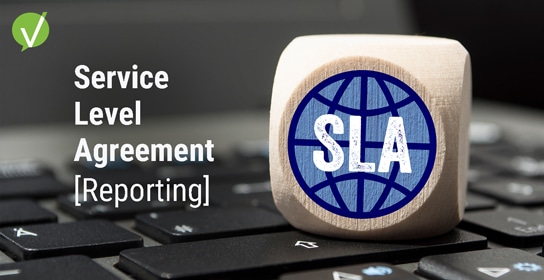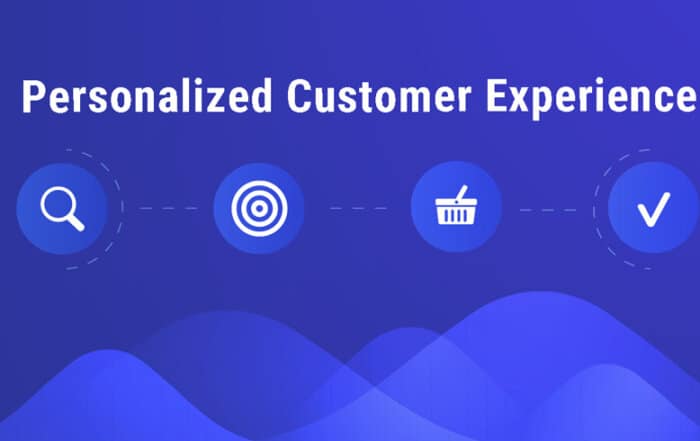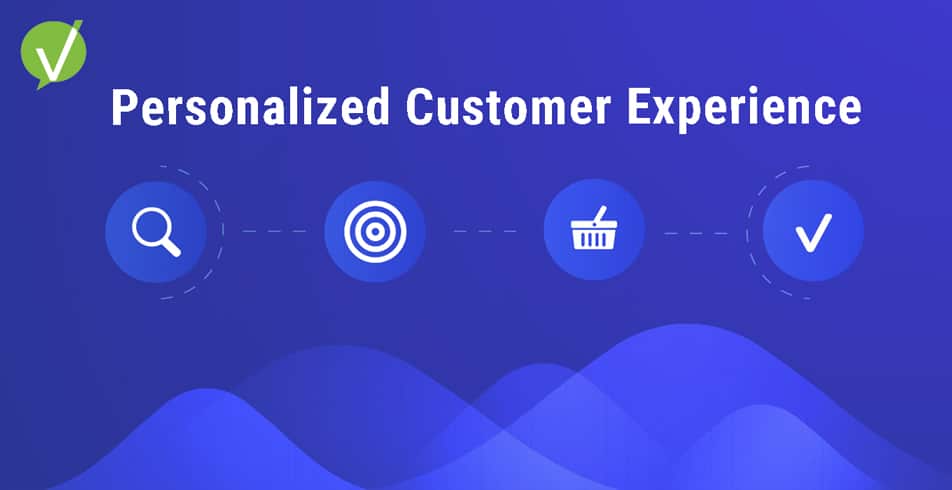SLA Reporting: Driving Continuous Service Improvement
Introduction
Things You Will Learn in This Article:
- The vital role of SLA reporting in ensuring top-notch service quality and its benefits.
- How SLAs set clear expectations and metrics.
- The significance of SLA compliance, data collection, and continuous improvement.
- The essential elements of an effective SLA and their role in service excellence.
- An example of a well-structured SLA report.
- How Vivantio can help you leverage SLA reporting for service excellence and operational efficiency.
The Power of SLA Reporting
Today, as the IT world keeps evolving at lightning speed, achieving top-notch service quality is more than just a goal—it’s the key to staying ahead. This is where SLA (Service Level Agreement) reporting comes into play, and trust me, it’s more than just numbers and graphs. Think of it as your organization’s secret sauce, ready to steer you away from service pitfalls and towards your journey to excellence. But how exactly does it work? Well, let’s take a closer look!
Imagine you’re an IT manager to a bustling service provider, responsible for delivering seamless network services to various businesses. Here’s where SLAs come into play:
- Clear Expectations: SLAs lay out clear expectations, ensuring everyone understands what service levels to anticipate. It’s like the menu at your favorite coffee shop; you know exactly what you’re getting.
- Performance Metrics: Customer health metrics are like quality checks in the coffee-making process. They measure response times, uptime, and resolution rates—key indicators of your service’s quality.
- Compliance Assurance: Just as your coffee shop follows health regulations, businesses adhere to standards and regulations. SLA compliance ensures you’re meeting those industry standards, keeping your business operations smooth and legal.
- Continuous Improvement: Imagine if your favorite barista tracked customer feedback daily. That’s what SLA reporting does—it collects data, identifies areas for improvement, and guides you toward excellence.
But here’s the kicker: it’s not only service providers who benefit from SLA reporting. The businesses that rely on these services, like a chain of coffee shops, also reap the rewards:
- Reliability: Your coffee shops need a stable network to process orders and payments. SLA reporting ensures network reliability, just like your customers rely on their morning brew.
- Cost Savings: Efficient network operations save money, just as your coffee shop manages expenses to offer affordable cups of joe.
- Customer Satisfaction: An uninterrupted network means happy customers, just like a well-made latte leads to a contented coffee enthusiast.
- Scalability: As your coffee shop chain grows, so do your IT needs. SLA reporting helps you adapt and expand without spilling a drop.
So, why is SLA reporting important for your business? It’s the guiding light that ensures your services meet or exceed expectations, optimize operations, save money, and keep your customers coming back for more. Whether you’re a service provider or a business relying on those services, SLA reporting is the recipe for success.
But don’t just take our word for it; let’s explore SLA reporting together and discover how it can elevate your service quality and drive continuous improvement for your organization. We’ll look at its importance, components, benefits, and even walk you through creating an effective SLA report. So, grab your coffee and get ready to brew better service quality!
What Is an SLA? The Importance of Monitoring
First things first, let’s break down what an SLA is. Think of it as a promise, like the guarantee of your coffee shop serving your favorite blend every time. SLAs define the agreed-upon service levels between a provider and a customer, ensuring a mutual understanding of expectations.
Now, picture a scenario where your favorite coffee shop isn’t consistent. Some days you get your latte in minutes, and others, it takes ages. That inconsistency is what SLA monitoring aims to prevent. It’s like your barista ensuring every latte is consistently delicious and timely.
Elements of an Effective SLA
An effective SLA is like a well-structured menu—it’s clear, comprehensive, and tailored to your preferences. We’ll delve into the key elements that make up a strong SLA and explore how each contributes to service excellence.
- Clear Service Descriptions: A well-defined SLA starts with crystal-clear service descriptions. These lay out exactly what services are offered, leaving no room for ambiguity. This clarity ensures that both service providers and customers have a precise understanding of what to expect, preventing misunderstandings and disputes.
- Specific Metrics and Targets: Metrics are the benchmarks against which service quality is measured. Specific metrics, such as response times, resolution times, or uptime percentages, provide a quantifiable way to assess performance. Targets set the bar for service providers, pushing them to consistently meet or exceed customer expectations.
- Roles and Responsibilities: An effective SLA outlines the roles and responsibilities of both parties involved. It clarifies who does what, making it easier to track accountability and ensure that tasks are completed as agreed upon. This role clarity minimizes confusion and streamlines workflows.
- Escalation Procedures: No matter how well-prepared you are, issues can arise. This is where escalation procedures come into play. They define the steps to take when service issues aren’t resolved within acceptable timeframes. Effective escalation processes ensure that problems receive the right level of attention promptly.
- Monitoring and Reporting: To maintain service excellence, constant monitoring and reporting are crucial. SLAs should include mechanisms for continuous monitoring of performance metrics. Regular reports help track progress, identify areas for improvement, and maintain transparency between service providers and customers.
- Flexibility and Adaptability: Business environments change, and so should SLAs. A good SLA recognizes the need for flexibility and outlines how adjustments can be made when necessary. This ensures that the agreement remains relevant and effective over time, even as circumstances evolve.
- Communication Channels: Open communication is key to addressing issues promptly. SLAs should specify the channels through which customers can reach service providers and how quickly they can expect responses. This accessibility fosters a sense of partnership and trust between the parties.
- Service Level Reviews: Regular reviews of the SLA’s effectiveness are essential. They provide an opportunity to assess whether the agreed-upon targets are being met and whether adjustments are needed. These reviews help in refining the SLA for ongoing service excellence.
By meticulously crafting each of these components within your SLA, you create a roadmap for delivering exceptional service. Clear definitions, accountability, adaptability, and open lines of communication all play vital roles in ensuring that your organization consistently provides top-notch service, ultimately leading to customer satisfaction and business success.
Benefits of Using SLA Monitoring
Just like your coffee shop benefits from consistency and happy customers, SLA monitoring brings a slew of advantages to both service providers and businesses relying on those services. Let’s sip on these benefits and understand why they matter.
- Enhancing Service Provider-Customer Relations: In a world where relationships matter, SLA reporting acts as the glue between service providers and businesses. It fosters trust, communication, and collaboration, similar to how a barista remembers your favorite order and greets you with a smile.
- Creating Customized SLA Reports: Now, think of your coffee shop offering personalized loyalty rewards. Customized SLA reports are like tailored perks—businesses get the data and insights that matter most to them, improving their service quality in a way that suits their unique needs.
- Configuring SLA Reports: Creating an SLA report can be as straightforward as making your morning coffee. We’ll walk you through an example, ensuring you’re equipped to brew up an effective report.
- Measuring SLA Performance: Real-Time and Historical: Imagine your coffee shop analyzing real-time sales data to predict busy hours. SLA monitoring provides real-time and historical data to measure your service’s performance accurately and help you anticipate and respond to changing needs.
- Decoding SLA Metrics: Key Performance Indicators: Just as your coffee shop tracks the number of cups sold, SLA metrics are key performance indicators that gauge your service’s health.
- Embracing a Culture of Continuous Improvement: Remember when your coffee shop introduced a new blend based on customer feedback? SLA reporting encourages continuous improvement, just like your coffee shop strives to enhance its menu based on your preferences.
Now, let’s delve into the world of SLA reporting together. Whether you’re a service provider or a business relying on those services, SLA reporting can help you brew better service quality, continuous improvement, and lasting customer satisfaction. So, grab your coffee and let’s explore a sample SLA Report.
Sample SLA Report
Below, you’ll find an example of what a well-structured SLA report can look like, along with explanations of key components and their significance in achieving service excellence. Whether you’re new to SLAs or looking to enhance your reporting process, this sample report will provide valuable insights and inspiration.
Harness the Power of SLA Reporting
In the ever-evolving landscape of IT and service management, embracing change is not just a strategy; it’s a necessity. As technology marches forward, so too does the potential for innovation. SLA reporting is your compass in this dynamic environment, ensuring your services remain at the forefront of excellence.
So, whether you’re a service provider striving for client satisfaction, a business looking to streamline operations and reduce costs, or a network administrator seeking to optimize performance, SLA reporting holds the key to your success. It’s time to take charge of your service quality, empower continuous improvement, and pave the way for lasting customer satisfaction.
Experience the Power of SLA Reporting with Vivantio
For over two decades, Vivantio has been a trailblazer in empowering organizations like yours to optimize their services and exceed customer expectations. We’re poised to guide you on your journey towards leveraging SLA reporting for service excellence.
Don’t miss out on this transformative opportunity. Explore the possibilities, revolutionize your service delivery, and raise the bar with Vivantio. Contact our dedicated team today or register for a free demo to embark on a path toward elevated service quality and operational efficiency.
Your future of service excellence begins now. Embrace it with Vivantio.

















